
It was true too – I’d gone in too hot, but luckily our new Volkswagen Golf GTI long termer didn’t seem to notice. After rolling off the throttle and adding more lock, the VW simply gripped and turned. No fuss, no understeer. Just poise and balance.
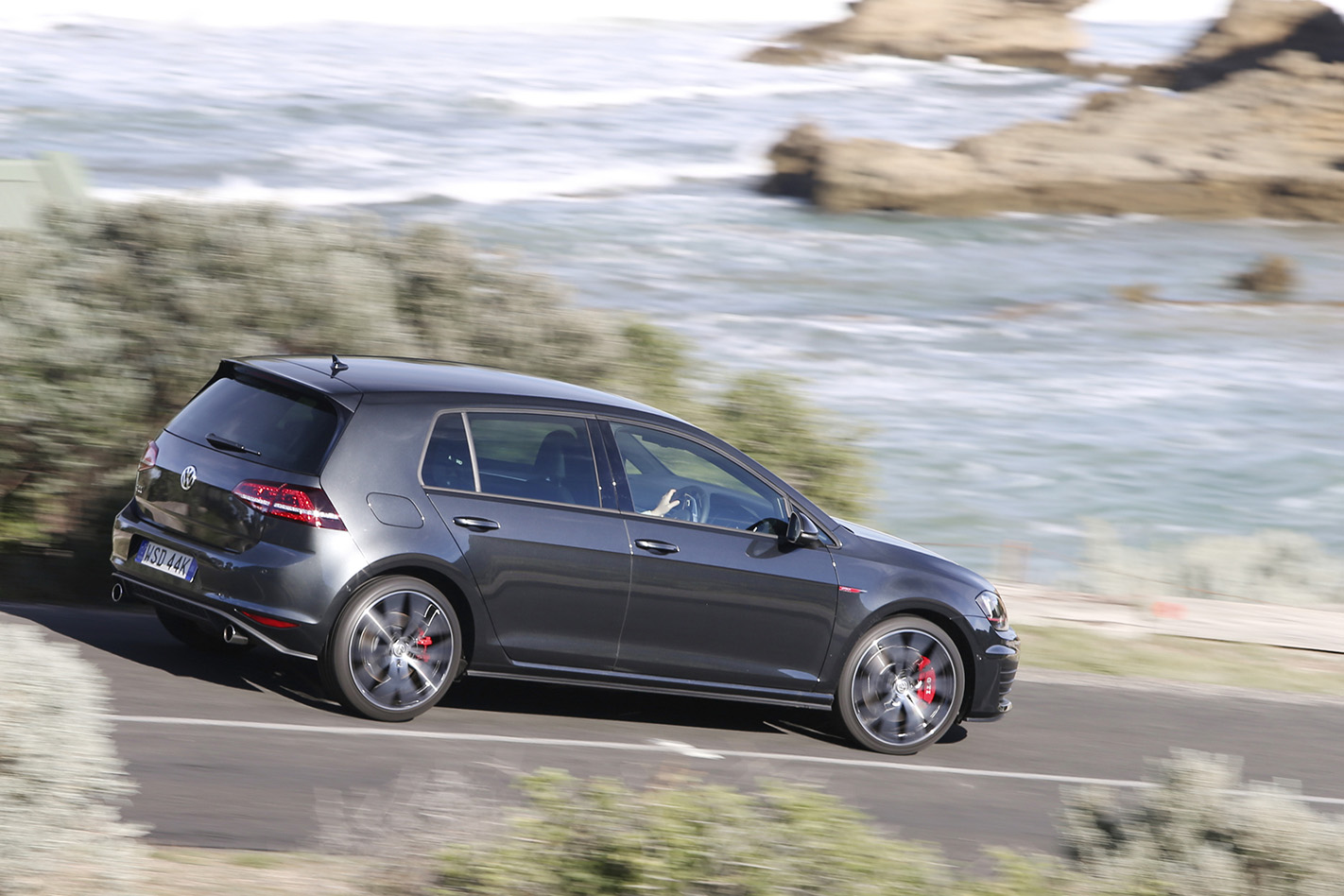
The Golf had landed in our garage just a day earlier, but of course, keen observers will note this is no ordinary GTI. They’ll know its bespoke 19-inch wheels, its bulging brakes and standard bi-xenon headlights mean it’s a GTI Performance – which, along with a host of other kit, gets VW’s trick new electronic front diff.
Much more complicated than a traditional LSD (see breakout below), the e-diff is the reason our GTI hustled through that 35km/h corner without breaking a sweat.
Capable of sending 100 percent of drive to either of the front wheels, the diff also has a torque vectoring effect to shuffle the engine’s twist between the wheels for maximum grip. The result is a front-driver with razor-sharp turn in, brilliant mid-corner poise, and the composure and traction to slingshot you out the other side.
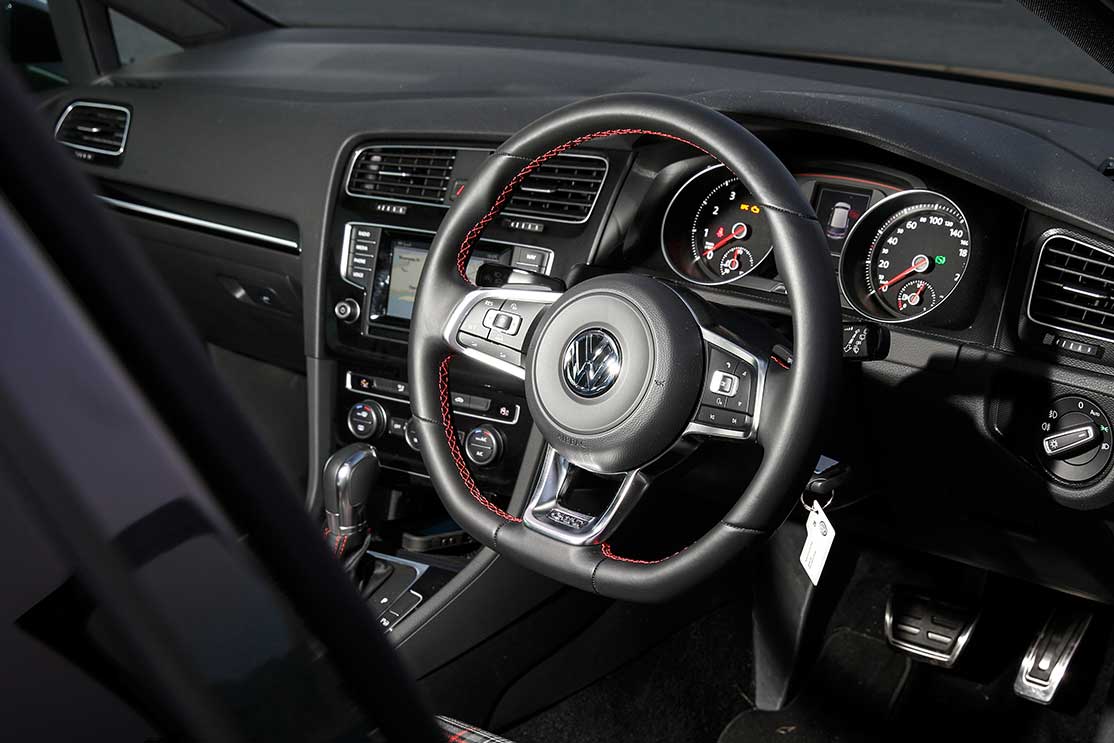
As you’d probably expect, this diff doesn’t come cheap. Priced at $48,490 (our car hits $50,290 thanks to metallic paint and VW’s Driver Assistance Package), the Performance is $4500 more expensive than a standard GTI, but so far is worth every cent.
Other standard kit includes the same chunky brakes as the Golf R (340mm up front, 310mm at the rear), and bespoke 19-inch alloys riding on 225/35 Pirelli P Zeros. Engine-wise, power from the GTI’s EA888 turbo four is up a negligible 7kW, while peak torque remains at 350Nm but is available over a 200rpm-wider rev range.
In the looks department, the Performance gets adaptive bi-xenon headlights, along with a sexy red stripe, unique tail-lights and inside, flashes of Alcantara on the bolsters of the iconic tartan seats.
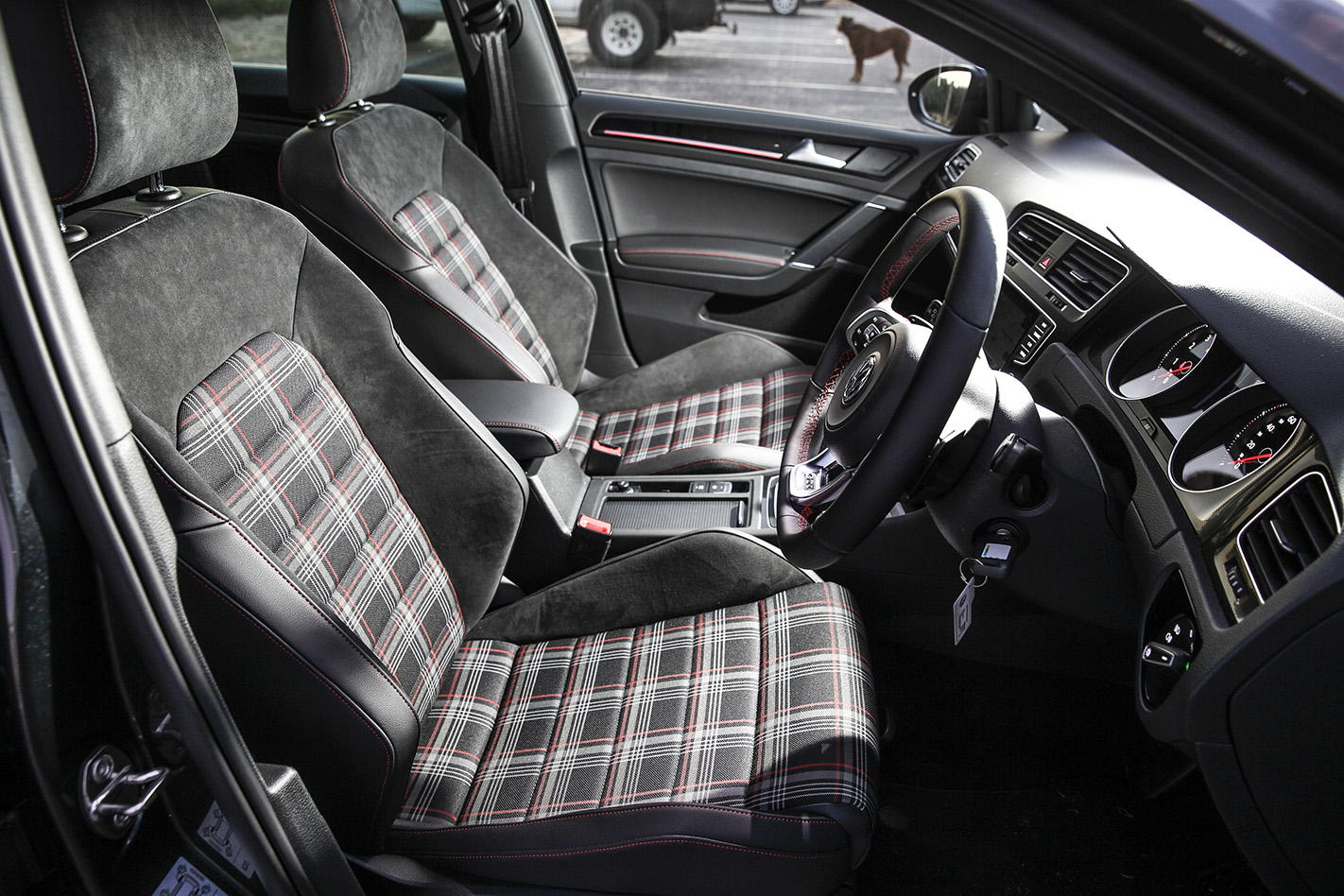
Initial impressions, then, are positive, but there are a few foibles. The button to change the car’s Dynamic Chassis Control system, for example – which alters damping, steering weight, engine sound and throttle response – is annoyingly hidden behind the gearstick. Then there’s the gearbox itself.
Often seen as a weakness, the DSG is sharp and intuitive at speed, but slow and clunky when parking. Which brings us to the issue of reliability. When the Mk7 Golf won Wheels Car Of The Year award, the team were inundated with letters asking how they could possibly award their highest honour to a model plagued by gearbox recalls and a power-loss fault linked to the death of a Melbourne woman, Melissa Ryan, in 2011 – despite a Victorian coroner clearing Volkswagen of any blame.
The answer is simple. Wheels has never encountered any reliability issues with the Golf during testing, which is why we were so keen to procure this dual-clutch GTI. If anything falls off, breaks, or sticks in the next six months, we’ll be sure to let you know.
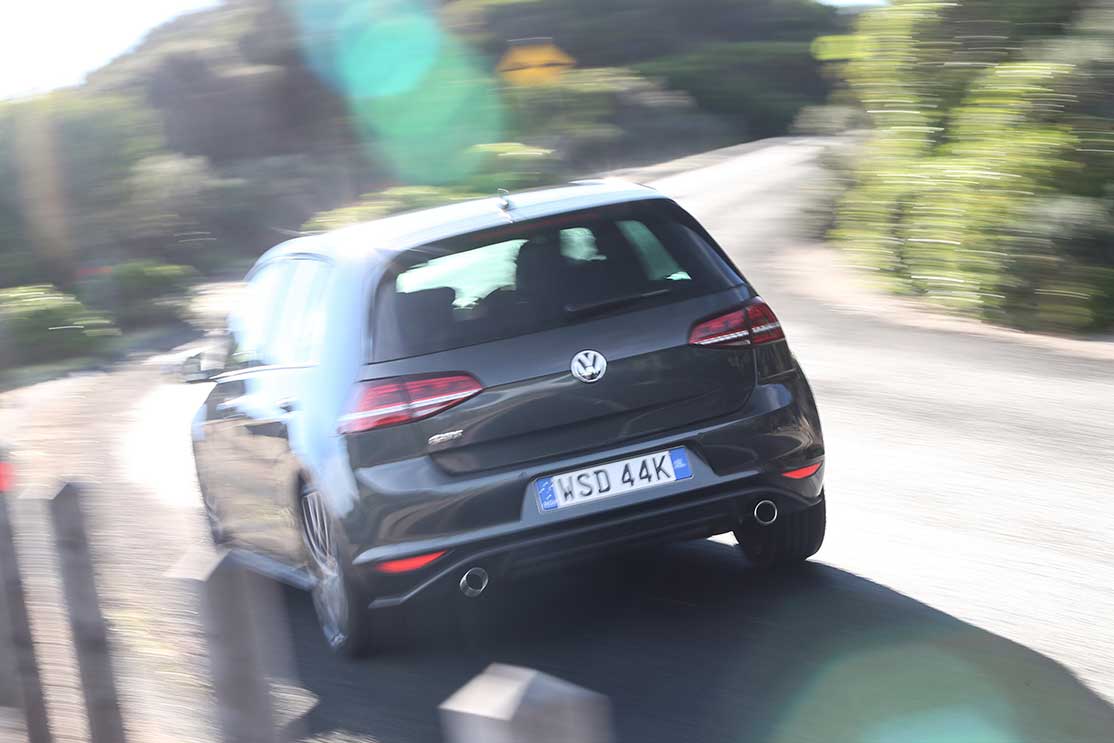
It sounds complicated, but the electronic diff lock is easy to understand. Compared to a mechanical LSD, which prevents the inside wheel from spinning, the GTI’s multi-plate unit monitors the car’s wheel speed, vehicle speed and yaw rate to determine which tyre has more grip. It then shifts more grunt (up to 100 percent) to the stickiest wheel, so turn-in understeer is reduced.
Torque vectoring, which throws more twist at the wheel on the outside of the bend, is then used on corner exit, allowing you to pick up the throttle earlier. The diff can even negate the ESC system. If, for example, it detects oversteer, it generates a stabilising ‘yaw moment’ to settle the car without the need for annoying ESC interruptions.
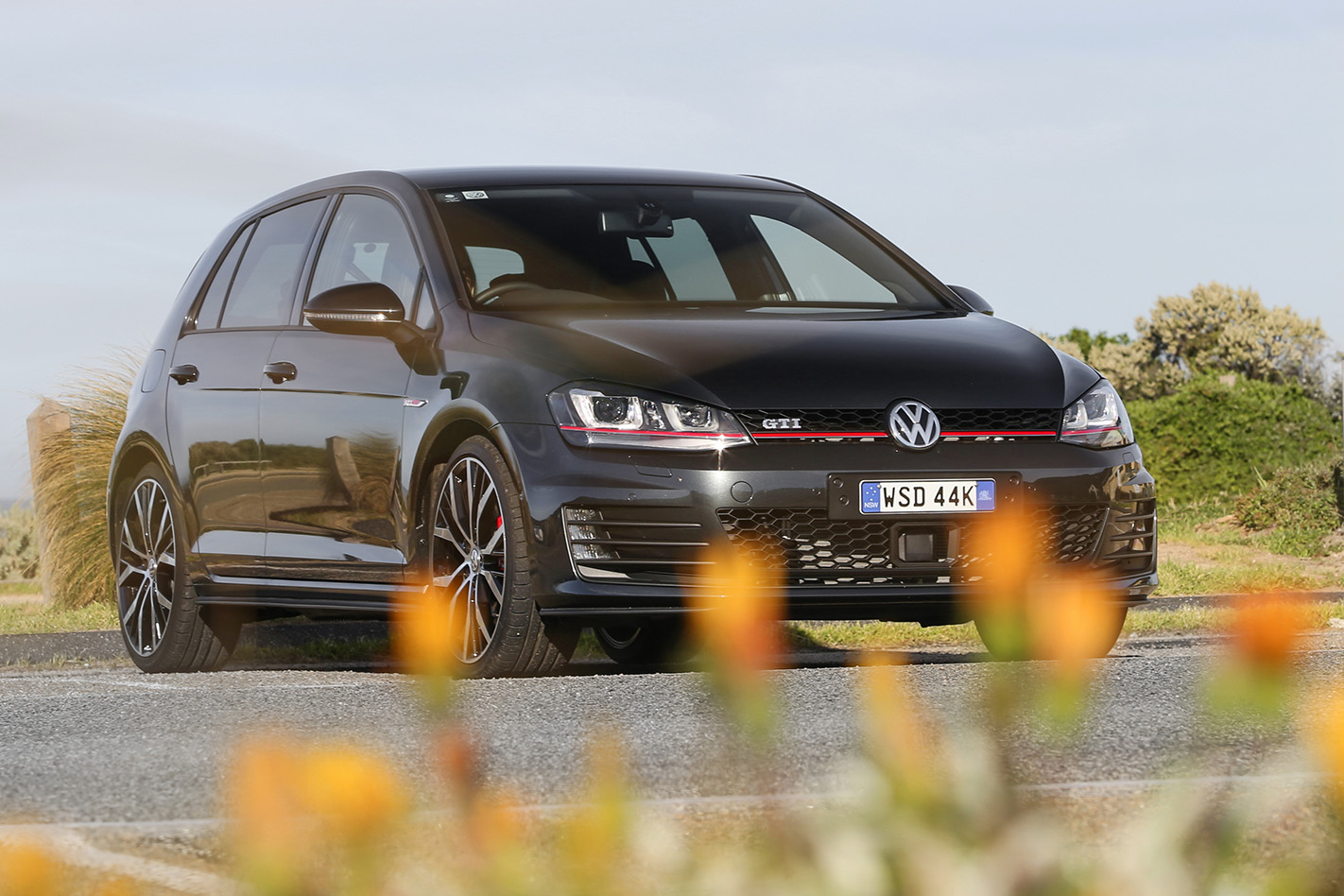
Update 1
I love it when new technology fails – particularly in cars. It’s a sick pleasure, like watching skateboarding stacks on YouTube. Of course, I’m not talking about vital technology like airbags or brakes, but little tech fumbles that leave car companies with egg on their face.
Like when Mercedes-Benz crashed its new S-Class while trying to demonstrate its collision warning system. Or when Holden’s new self-parking system on the Holden VF Commodore failed to detect a parking space. Twice. In a room full of journalists.
Things had been going swimmingly with my long-term Volkswagen Golf GTI Performance. Then it spat in my face. Returning home from dinner, I engaged the GTI’s simple and intuitive self-parking system to slot into a spot in front of my house. I guided the Golf in on the brake with complete trust, the steering wheel spinning of its own accord. Things were going well until the front left wheel bumped into the gutter. Even this wasn’t a drama, given the wheel was on hard right lock, so only the rubber bashed into the cement. Then, with no input from me or any change on the brake pedal (the car was stationary), the Golf straightened itself. Crunch.
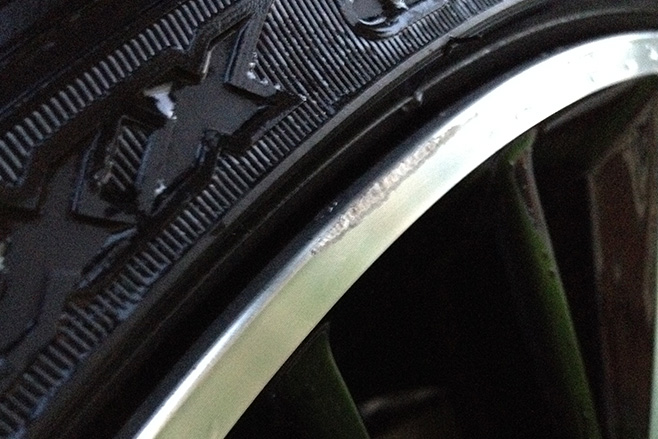
The kerb took a bite out of the 19-inch rim the size of a 50-cent piece, leaving me a furious cocktail of disbelief and unadulterated rage. Then I got to thinking; who was at fault? Surely not me. It was the car that chose the steering lock and distance from the kerb; all I did was control the speed, which was painfully slow. If it was my car, I would have been straight on the blower demanding VW repair the wheel.
Turns out I was wrong. After calling VW, the official response was: “Thanks for letting us know about the damage. To clarify, the Park Assist system did not damage the vehicle; the driver is responsible for maintaining control of the vehicle. Park Assist 2.0 is an assistant. The driver is still in control of the car and all legal liabilities remain on the driver when using the system.”
Volkswagen suggested two things could have tripped up the GTI. First, the offending kerb is of lower-than-usual height, but it’s a spot the Golf had previously navigated without damaging its wheels. Secondly, VW reckons a parking sensor could have been bumped and put out of alignment, which again is doubtful given how cautiously I’ve used the system.

So, let this be a warning. Automated technology like self-park systems, collision prevention and such is becoming more widespread. But place your trust in such technology at your peril.
The parking incident was a blemish on an otherwise A+ scorecard for the Golf this month. Sadly, there was no free time to escape to winding roads to further acquaint myself with its sublime balance, but even stuck in the rat race, the GTI impressed. The press of a button (Sport to Comfort) transforms the Performance from a rorty, apex-hunting hot hatch into a supple and refined city cruiser that soaks up road imperfections and speed bumps with ease – no easy achievement given its big 19-inch hoops.
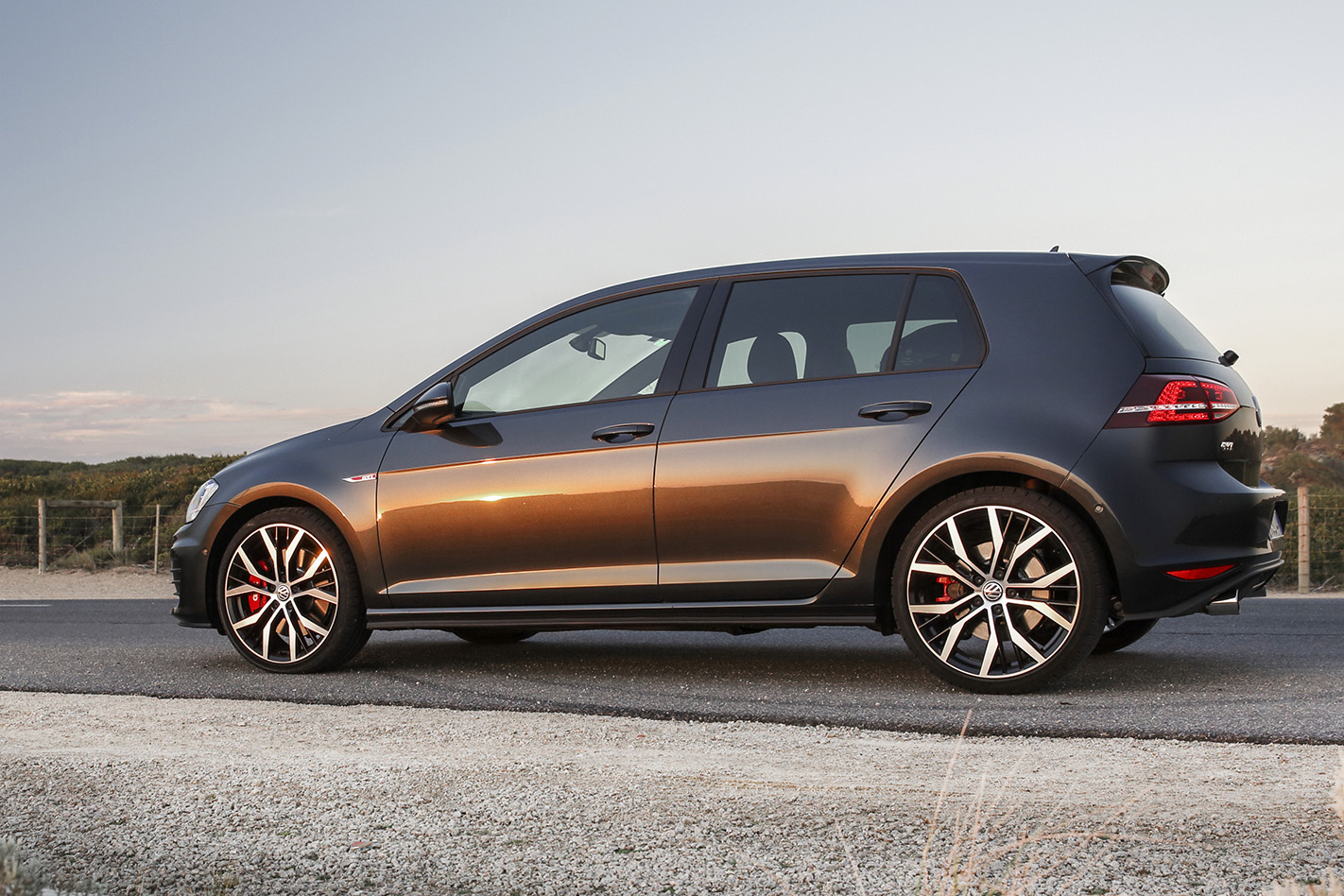
Update 2
IT’S a bitter pill that I’m not rich. There’s no silver spoon stuck to my tongue, I have no diamond mines to inherit and sadly no trust funds to collect. But yesterday I experienced a problem usually reserved for the wealthy – which performance car to take to the track.
Wheels magazine had a day booked at the tortuous, twisting piece of tarmac that is the Haunted Hills circuit and, happily, I had two hot hatches sitting in the driveway – my long-term GTI and a Renaultsport Megane.
I’d booked the Renault for exactly this opportunity. Widely regarded in the Wheels office as the hot-hatch benchmark, I wanted to test its renowned razor-sharp dynamics against the Golf’s. But with two cars and only one person to drive them, I had to choose.
In the end, the fact I had yet to take the Golf to its limit won out over the Megane’s promise of old-school manual gearbox fun.
In any case, after a week at the wheel of both cars, I was almost convinced the Golf is the better hot hatch. While both cars ride well considering their big 19-inch wheels, the firmer, more focused Megane jars where the supple Golf is compliant.
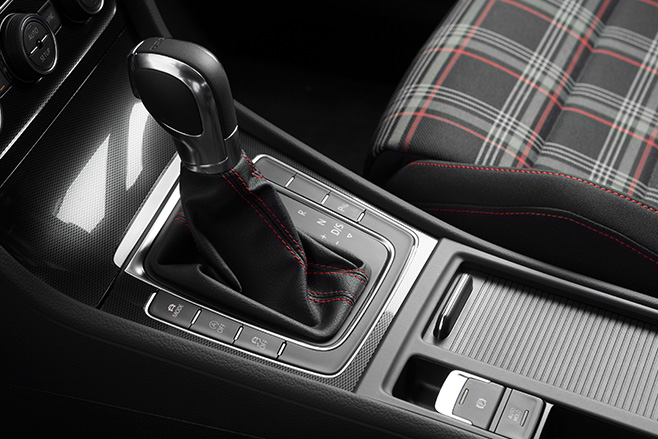
It’s the same story inside, with the Renault’s hard Recaro bucket seats growing uncomfortable over long distances compared to the Golf’s supportive, Alcantara-trimmed pews. Interior quality is better in the Golf as well, as are its ergonomics. Sure, French cars should be quirky, but I’d grown tired of having to lean forward from the driver’s seat to reach the dash-mounted touchscreen. And the instrument dials point at the roof, not the driver.
Then there’s the sound. Compared to the Golf’s tasty note and DSG crack on upshifts, the Renault’s exhaust is virtually silent. It redeems itself in RS mode, where it produces a strong induction noise at high revs, but the Renault’s soundtrack just isn’t as involving.
The burning question, though, was could the GTI keep its nose in front on the track? Well, after a day belting around Haunted Hills’ unforgiving bends, it would appear not. I have no doubt the razor-sharp manual Megane would have been faster and more fun at the limit than the Golf. But only just.
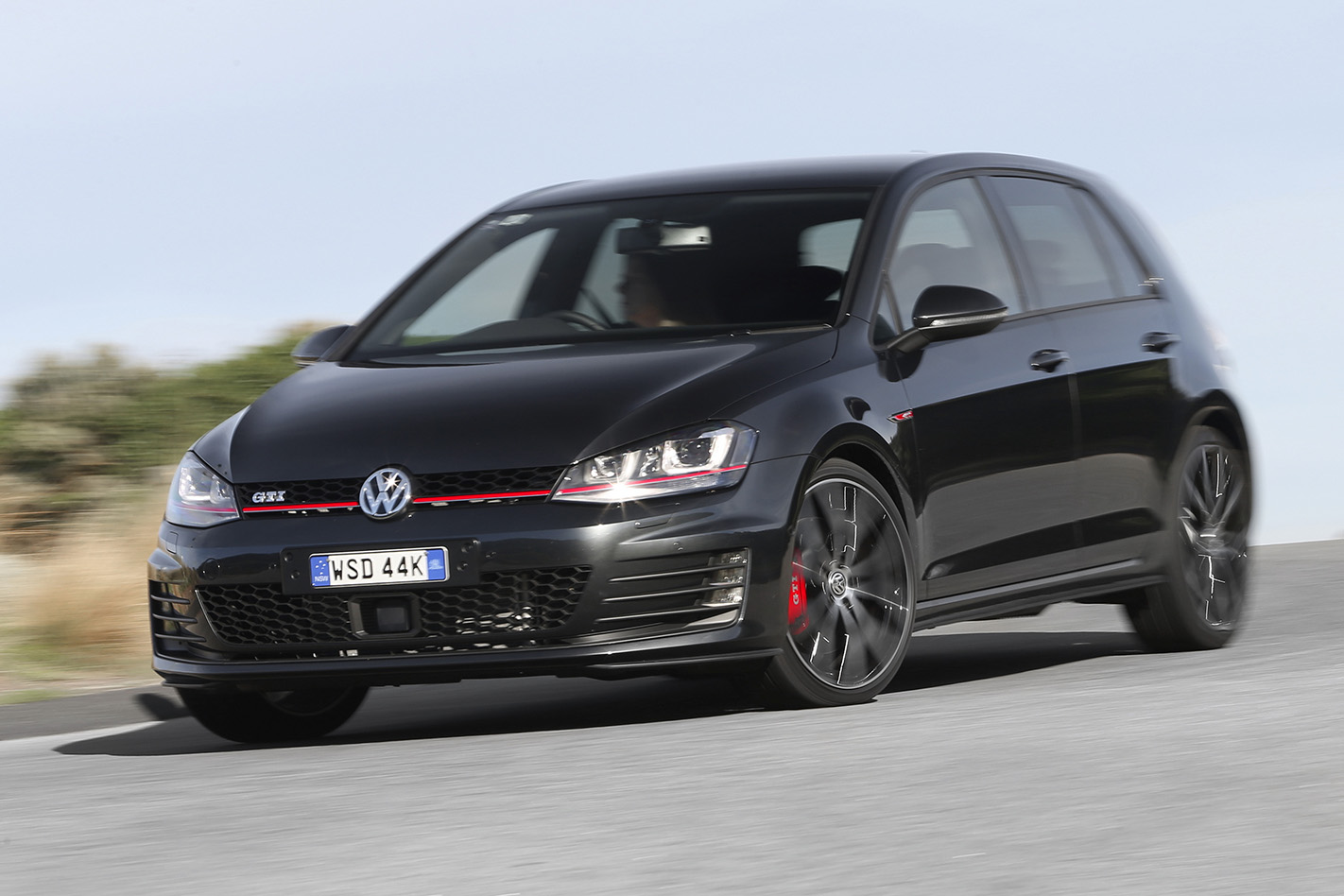
Supple and rewarding, the Golf’s playful chassis and strong, willing engine make it a hoot at 10-tenths. Throw the Performance at an apex and you can feel the electronic front diff reducing understeer before the tyres grip and the chassis pivots behind your hips into benign oversteer. It’s predictable and fun at the limit, yet has one inescapable flaw – its electronic nanny. Even with all the computers turned off, the GTI’s safety net intervenes, meaning moments of fun are swiftly and brutally shut down.
While annoying, the VW’s heavy-handed stability control can’t sway my overall decision. In my opinion, the GTI Performance is the better hot hatch. Yes, the sharper, more involving Megane trumps it at the track, but it can’t match the Golf’s liveability. A hot hatch should be everything to all drivers and, while the Renault decisively nails the hot part, I prefer the Golf’s more complete skill set.
Update 3
I’m a cheating, adulterous bastard. There, I’ve said it. Ever since the Volkswagen Golf GTI P landed in my garage, I’ve been keeping a big, fat, dirty secret – this isn’t my first long-term GTI experience. I’m actually a GTI owner.
My GTI is a 2007 Mk5 DSG with 71,000km on the clock and, despite most of my driving now being soaked up by newer press cars, I’ve kept it for the occasional weekend punt. Until now, it’s been the perfect hot hatch companion. In five years of ownership, nothing has gone wrong, bar a faulty oxygen sensor that cost $100 to fix.
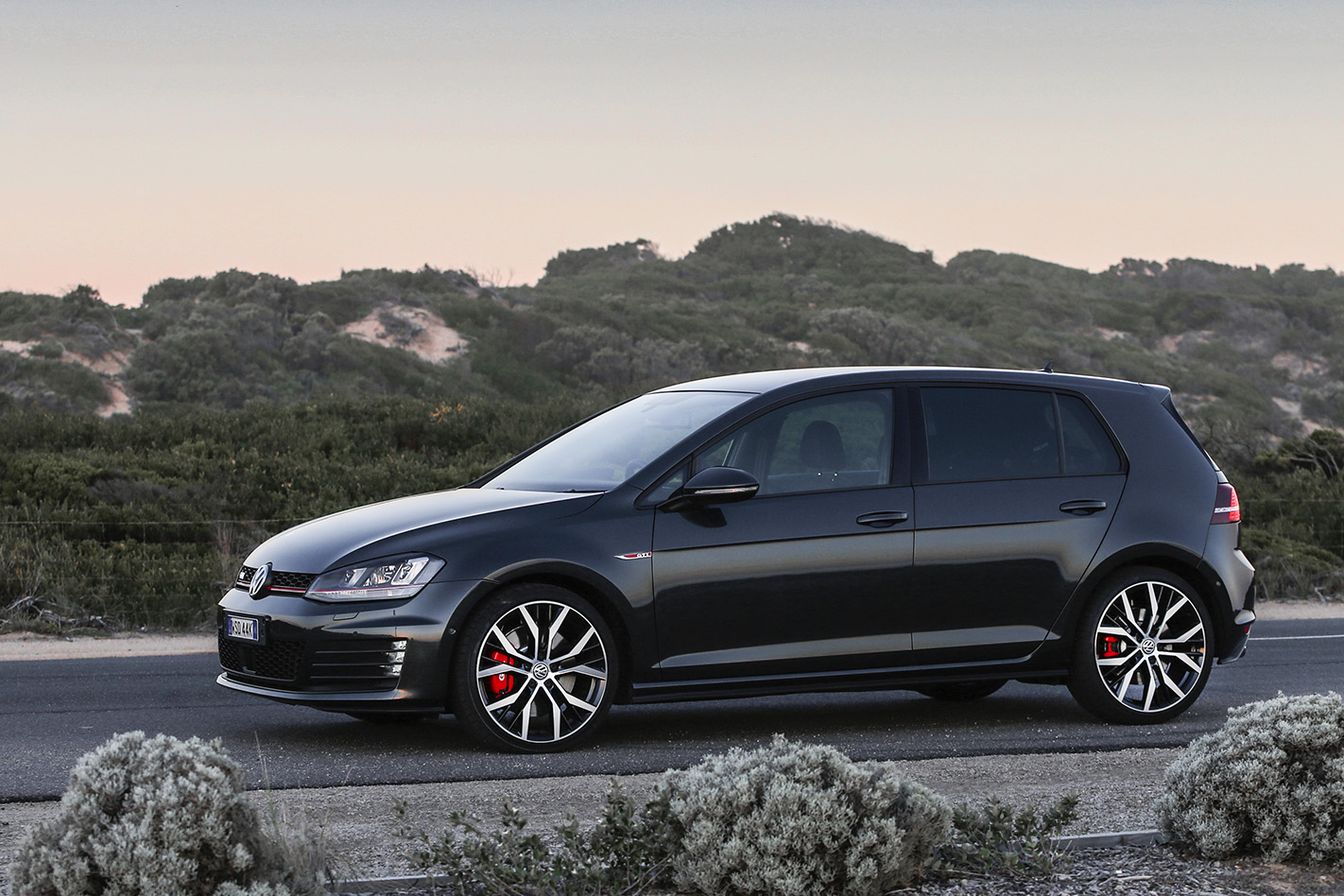
The arrival of the Mk7 GTI P, however, has not been good for our relationship. Every time I drive the Performance, it feels like I’m jumping into bed with the Mk5’s younger, hotter sibling. It’s more fun, looks better and, thanks in part to its electronic front diff, is sharper, too.
Given the Performance is seven years younger and bristling with Volkswagen’s latest tech, you’d expect this. But there are some things the older car does better.
I prefer the Mk5’s tartan-trimmed front seats for one. Unlike those in the Performance, they’re made by Recaro and have better lateral support. The Mk5’s seating position is lower, too, and I favour its slightly cushier ride on taller 225/45R17 tyres. The Performance rolls on bigger, stickier 225/35R19 hoops. You can also turn the Mk5’s stability control off completely, something you can’t do in the track-focused GTI Performance.
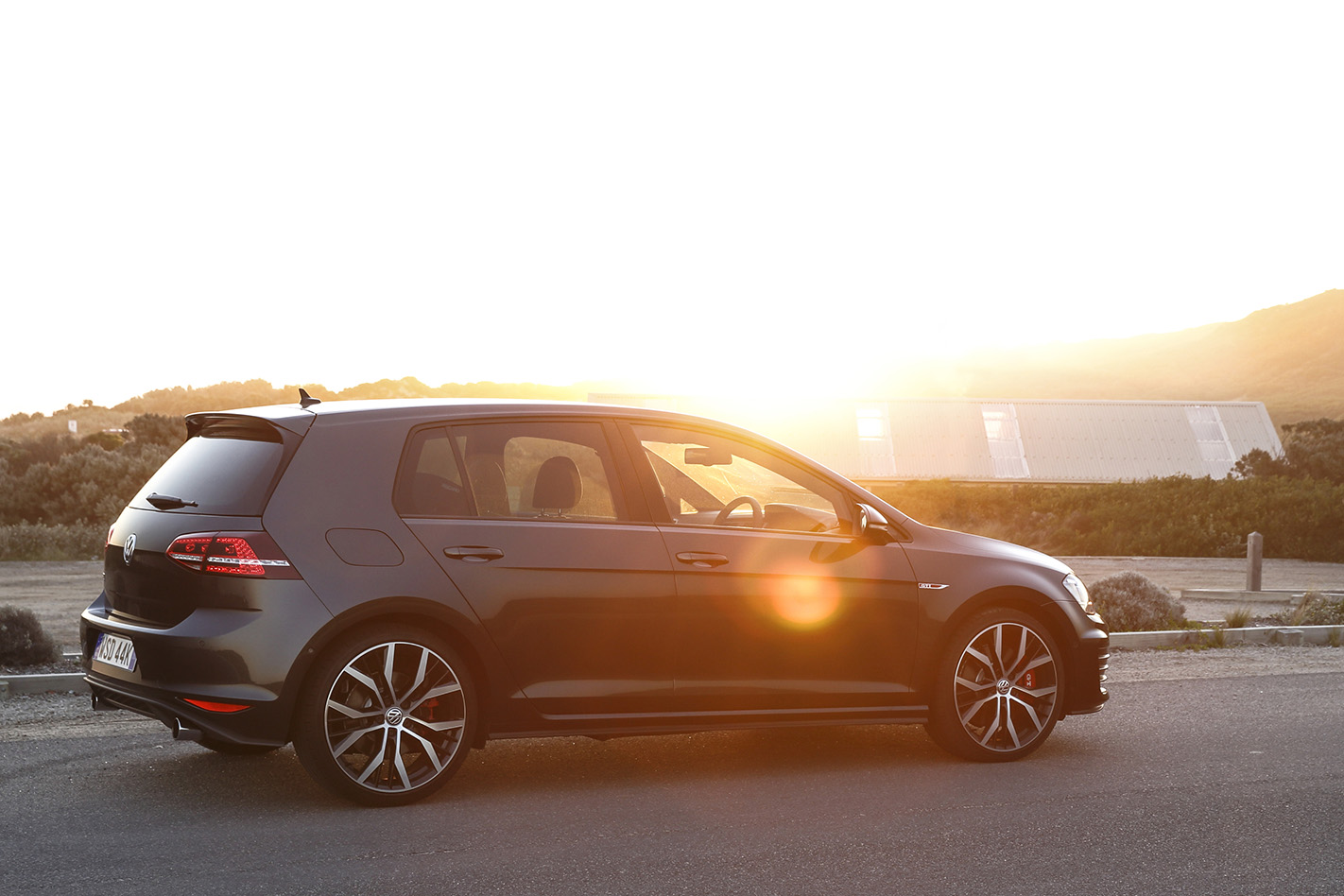
That’s where the positives stop, though. The Performance is undoubtedly safer, faster and smoother (thanks mostly to its updated and more intuitive DSG gearbox), and it’s also more flexible. Unlike my one-size-fits-all Mk5, you can change the Performance’s character at the press of a button. Hidden (annoyingly) behind the gearstick on right-hand-drive models is the Drive Mode Select system, which offers Normal, Comfort, Sport, Eco and Individual settings.
Each mode alters the car’s adaptive dampers, the weight of the electric steering and the shift points for the six-speed DSG. So far, most of my time was spent in Normal, but this month I ventured into Eco to save some juice. One tank and 560km later, the Golf returned 8.9L/100km – a figure that’s one litre better than my best so far in Normal.

But there was a price to pay. Unlike Normal mode, and even Comfort, which both strike a sweet balance between a comfortable ride, suitable throttle response and precise gear shifts, switching to Eco was like clubbing the Performance over the head. Its rorty engine suddenly felt too docile, while its throttle response became doughy and the gearbox frustratingly jerky in traffic. It’s a mode best left for the freeway.
Sport, too, is a step too far for regular driving due to its sharper suspension, but it’s perfect for the track or the occasional weekend punt – where the GTI P will continue to usurp my Mk5’s honest, but ageing, performance.
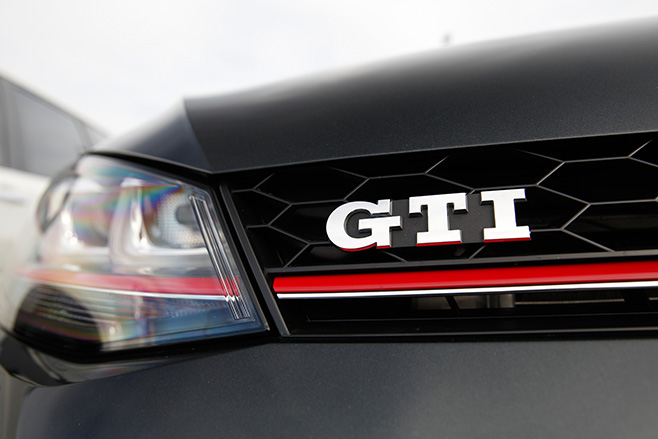
Update 4
Borrowing the GTI from Alex last month proved quite a humorous experience, for me anyway. He’d expected me to turn up and swap his GTI Performance for a Mercedes ML63 AMG, in all its 500-horsepower V8 glory. But the office big-wigs had suddenly allocated the AMG elsewhere, which meant it was no longer available. Instead, I arrived to swap the Golf for something slightly less powerful: a Kio Rondo.
Thankfully, Alex wouldn’t be home when I handed the keys to his fair lady. Yet as soon as the seven-seat people-mover from Korea rolled up instead of a German steamroller, she sensed something was amiss. The alarm bells (my phone) soon rang, but Alex had to accept the decision was set in stone.
A drive to Sydney for Robbo’s farewell dinner was a 2000km round trip I’d done in reverse in a Mk5 GTI five years ago, with the same girlfriend alongside. So I stopped thinking about the possible advantages of a Rondo over an ML63 (umm, fewer fuel stops, less extrovert…) and instead reminisced about the good old days. Did the newbie shame the Mk5? Not at all.
Maybe I’m getting used to GTIs, because I like this car, but I can’t love it like I did that stubby red three-door in 2009. Perhaps that’s because the old one was a manual whereas the new one has fallen foul of fashion with its DSG – a gearbox I’ve never liked because it occasionally leaves you high and dry when you mash the pedal.
The larger Mk7 easily swallowed several super-sized mounted posters in the back, and should humans have wanted a ride they would’ve been comfier in the newbie, too. Yet the extra space didn’t make an ounce of difference up front and, despite the newer MQB architecture, the Mk7’s economy of 7.2L/100km didn’t touch the 6.2L/100km of the old Mk5, even with the new bypass for Holbrook (and its eerie submarine).
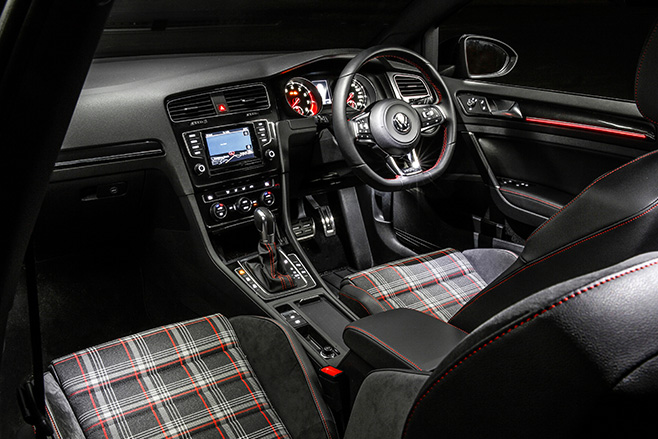
Both generations are brilliant on a winding road, and the Mk7’s harder punch is a welcome trade-off for the fuel economy difference, but it was hardly needed on this trip. What was a boon was the adaptive chassis – I wouldn’t buy a new GTI without it – but then there’s the price…
I was shocked to learn, having just returned to Oz, that this car costs nearly $50K. Sure, coffee is a million bucks now, and houses cost your first-born, but when there’s an all-wheel-drive Golf R in showrooms for $51K, the GTI has just been ousted in my ‘realistic’ fantasy garage.
The Kia Rondo, of course, was never in it.




